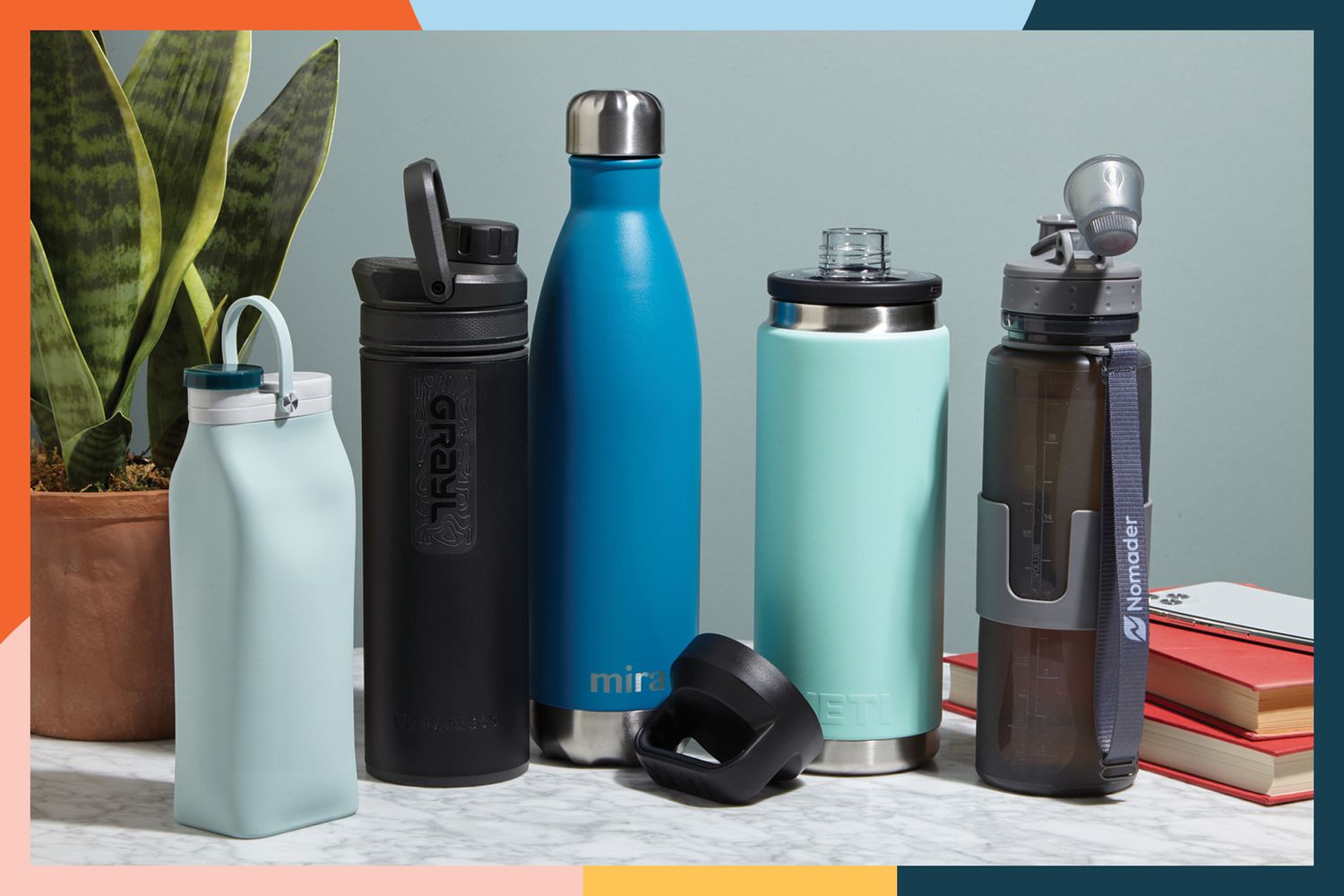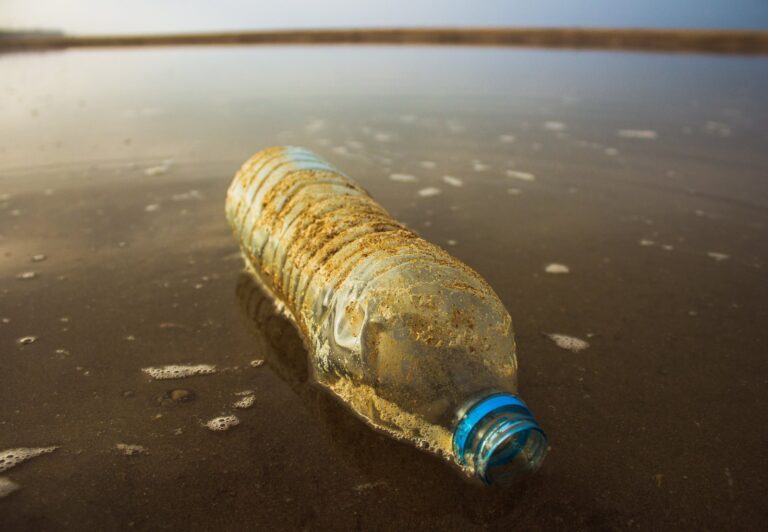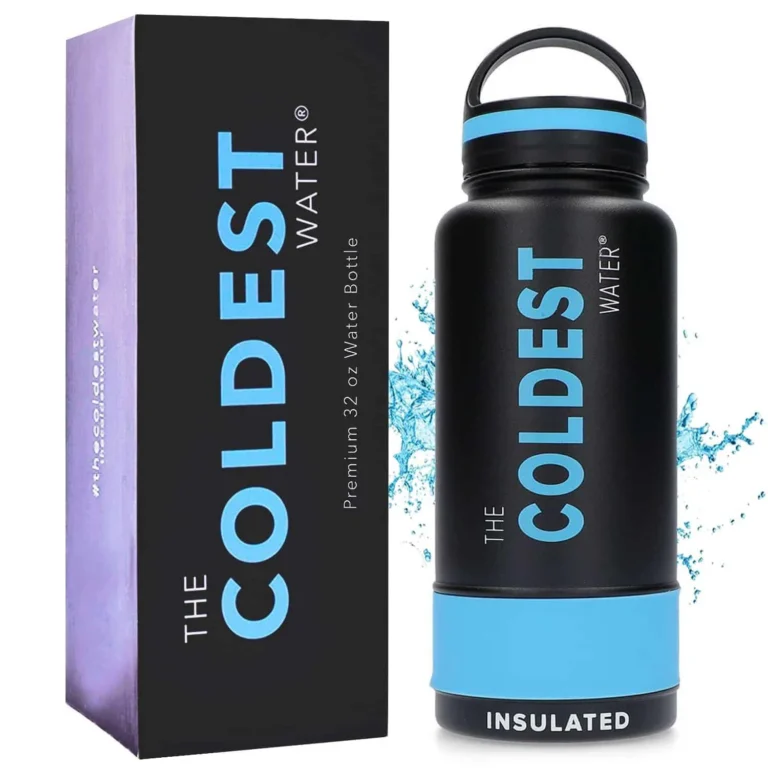In our quest for optimal well-being, we all know the importance of staying hydrated by drinking plenty of water. However, the process of choosing a water bottle to suit your needs can be a daunting task. You might ask yourself- which type is the best for your water-drinking habits? Glass, stainless steel, plastic, or something else? Fear not, in this blog post we will explore different types of water bottles to help you make an informed decision for your optimal hydration and environmental-sustainability.
How to choose water bottle from different types:
Water bottles come in various types, each with their own unique features and benefits. Plastic water bottles, for instance, are lightweight and affordable, making them a popular choice for many. Additionally, BPA-free options are readily available, ensuring that harmful chemicals are not present in your drinking water. Plastic bottles are also easy to clean, adding convenience to your daily routine.
On the other hand, stainless steel water bottles are renowned for their durability and long-lasting nature. They can keep your drinks cold or hot for extended periods of time, which is perfect for those who enjoy sipping on refreshing beverages or hot beverages throughout the day. Moreover, stainless steel bottles are environmentally friendly, offering a sustainable choice for eco-conscious individuals.
Glass water bottles are known for their hygienic properties, as they are free from chemicals that may leach into your water. However, they may not be ideal for activities that require portability, as they can easily break if dropped. Additionally, glass bottles have limited insulation capabilities, which may not keep your drinks at the desired temperature for long periods.
Overall, the choice of water bottle depends on several factors. The purpose of use, capacity and size, lid types, material preferences, cleaning and maintenance requirements, and budget considerations should all be taken into account when making a decision. Selecting a water bottle that suits your individual needs will ensure that you stay hydrated in the most convenient and enjoyable way possible.
II. Overview of different types of water bottles
A. Plastic water bottles
Plastic water bottles are a popular choice for many individuals due to their lightweight and affordable nature. They are incredibly convenient for on-the-go activities, such as hiking or traveling, as they are easy to carry and transport. Additionally, with the growing concern over harmful chemicals, BPA-free plastic options are widely available in the market. This ensures that consumers can enjoy their water without worrying about the potential health risks. Moreover, plastic water bottles are also easy to clean, making them a practical choice for those who value convenience. So, if you’re looking for a cost-effective and hassle-free option for your hydration needs, plastic water bottles may be the perfect fit for you.
1. Lightweight and affordable
Plastic water bottles are a popular choice for many people due to their lightweight and affordable nature. They are easy to carry around, making them convenient for on-the-go hydration. Additionally, plastic water bottles come in a range of sizes, allowing users to choose the capacity that suits their needs. It’s worth noting that there are now BPA-free options available, addressing concerns about potential chemical exposure. In terms of cleaning, plastic water bottles are generally easy to clean, either by hand or in the dishwasher. They are also less likely to shatter or break, making them a practical choice for active individuals. So, if you’re looking for a cost-effective and lightweight solution for your hydration needs, plastic water bottles could be the way to go.
2. BPA-free options available
Plastic water bottles have long been a popular choice for their lightweight and affordable nature. However, concerns about the potential health risks associated with the chemical Bisphenol A (BPA) have made BPA-free options increasingly important. With advancements in manufacturing, many plastic water bottles now come with the assurance of being BPA-free, providing consumers with a safer alternative. These bottles are often made from materials such as high-density polyethylene (HDPE) or polypropylene (PP), which are considered safer and more environmentally friendly. So, if you prefer the convenience and affordability of plastic water bottles, be sure to look for the BPA-free label, ensuring that you can hydrate with peace of mind.
3. Easy to clean
Plastic water bottles are a popular choice for many reasons, and one of the key advantages is their ease of cleaning. Unlike other types of water bottles, plastic bottles typically have wide openings that make them easy to reach into and clean thoroughly. This ensures that no residue or odors linger after each use, providing a fresh and clean drinking experience every time. Additionally, most plastic water bottles are dishwasher safe, further simplifying the cleaning process. This convenience is particularly appreciated by those who are constantly on the go and need a quick and efficient solution for keeping their water bottles clean. So, when it comes to easy maintenance and hygiene, plastic water bottles definitely deliver.
B. Stainless steel water bottles
Stainless steel water bottles are a popular choice for those who prioritize durability and versatility. These bottles are built to last and can withstand the demands of everyday use. With their insulation properties, stainless steel water bottles can keep your drinks cold or hot for extended periods, making them a great option for outdoor activities or long commutes. Additionally, choosing a stainless steel water bottle is an environmentally friendly alternative to single-use plastic bottles. By opting for a reusable and durable stainless steel bottle, you can help reduce plastic waste and contribute to a greener planet. Whether you’re hiking, going to the gym, or simply staying hydrated throughout the day, a stainless steel water bottle is a reliable companion that will stand the test of time.
1. Durable and long-lasting
Stainless steel water bottles are known for their durability and long-lasting nature. Made from a strong and sturdy material, these bottles can withstand daily wear and tear without easily getting damaged. Whether you accidentally drop it or it accidentally rolls around in your bag, stainless steel bottles are built to last. Their durability also makes them ideal for outdoor activities and adventurous journeys, as they can handle rough conditions and survive in different environments. Additionally, stainless steel bottles have the added benefit of being able to keep drinks cold or hot for extended periods, catering to your preferences for refreshing cold water or a steaming hot beverage. In terms of longevity, stainless steel water bottles are certainly a reliable choice to consider.
2. Can keep drinks cold or hot for extended periods
Stainless steel water bottles are a popular choice for those who want to keep their drinks cold or hot for extended periods. Thanks to their excellent insulating properties, stainless steel bottles can maintain the temperature of your beverage for hours on end. Whether you’re enjoying a refreshing ice-cold drink on a scorching summer day or sipping a warm cup of coffee on a chilly morning, a stainless steel bottle can be relied upon to keep your drink at just the right temperature. This is particularly beneficial for people who are always on the go or those who need to stay hydrated during outdoor activities. So, if you’re someone who values temperature control and wants your drinks to remain enjoyable for longer periods, a stainless steel water bottle would be a perfect fit for you.
3. Environmentally friendly
When it comes to considering the environmental impact of our daily choices, opting for a stainless steel water bottle is a smart move. Unlike single-use plastic bottles that contribute to the ever-growing landfill problem, stainless steel bottles are a sustainable choice. They are highly durable and long-lasting, meaning they won’t end up in a landfill after just a few uses. Additionally, stainless steel bottles can be easily recycled at the end of their lifespan, further reducing their impact on the environment. By choosing a stainless steel water bottle, you are not only making a responsible choice for yourself but also for future generations. So, let’s go green and sip from a steel bottle!
C. Glass water bottles
Glass water bottles are an excellent option for those looking for a hygienic and chemical-free way to drink water. Unlike plastic or stainless steel, glass does not leach any harmful chemicals into your beverages, ensuring a pure and untainted drinking experience. Additionally, glass is easy to clean and resistant to staining or absorbing odors, making it ideal for maintaining the cleanliness and freshness of your water. However, it’s important to note that glass bottles are not the most portable option, as they can be fragile and heavy. Furthermore, their insulation capabilities are limited, meaning that your drink may not stay as cold or hot for extended periods. Nevertheless, if you prioritize the health aspects and don’t mind the lack of portability, glass water bottles are a great choice.
1. Hygienic and chemical-free
Glass water bottles are known for being hygienic and chemical-free, making them an excellent choice for those concerned about their overall health and well-being. Unlike plastic, glass does not leach harmful chemicals into the water, ensuring that you can enjoy your drink with peace of mind. Glass is also non-porous and doesn’t retain any residual flavors or odors, allowing for a clean and crisp taste every time. Additionally, glass is easy to wash and sterilize, ensuring that you can maintain the highest level of cleanliness. While glass may not be the most portable option due to its fragile nature, it is an ideal choice for those looking for a safe and environmentally friendly alternative to store their water.
2. Not ideal for activities requiring portability
Glass water bottles offer several benefits to those who prioritize hygiene and chemical-free options. However, they may not be the best choice for activities that require portability. Due to their fragile nature, glass bottles are more prone to breakage, making them less suitable for travel or outdoor adventures. It’s important to consider the practicality of your water bottle choice in relation to your everyday activities. If you frequently engage in activities that involve movement or travel, a more durable and portable option, such as a plastic or stainless steel bottle, may be a better fit. Ultimately, choosing a water bottle that suits your individual needs and lifestyle will ensure that you stay hydrated on the go.
3. Limited insulation capabilities
Glass water bottles have their own set of advantages and disadvantages when it comes to insulation capabilities. Unlike plastic or stainless steel bottles, glass is not an effective insulator. This means that your cold drinks may not stay as cold for as long as you would like. Similarly, hot beverages may cool down more quickly in a glass bottle compared to a stainless steel one. However, it’s important to note that glass water bottles are not designed for insulation purposes in the first place. Rather, they are chosen for their hygienic and chemical-free properties. So if you prioritize having a safe and eco-friendly option over insulation capabilities, a glass water bottle might be the right choice for you. Just keep in mind that it’s best suited for activities where insulation is not a main concern.
III. Factors to consider in choosing a water bottle
A. Purpose of use
When it comes to choosing the best water bottle, considering its purpose of use is crucial. Are you looking for a water bottle to take with you while you’re on the go, or do you simply need one for everyday use at home or the office? Plastic water bottles are lightweight, affordable, and ideal for activities such as hiking or sports. On the other hand, stainless steel bottles are durable, provide insulation for both cold and hot beverages, and are environmentally friendly. If you prioritize hygiene and chemical-free options, glass water bottles are a great choice for you. However, keep in mind that they may not be as portable and have limited insulation capabilities. Considering how you plan to use your water bottle will help you narrow down the options and find the perfect fit for your needs.
B. Capacity and size
When it comes to choosing the right water bottle, considering the capacity and size is crucial. Different people have different hydration needs, so it’s essential to find a bottle that can hold an adequate amount of water for your daily activities. If you’re always on the go or participate in rigorous physical activities, a larger capacity bottle, such as a 32-ounce or 40-ounce bottle, might be more suitable. On the other hand, if you prefer a compact and lightweight option, a smaller-sized bottle, like a 16-ounce or 20-ounce bottle, would be more practical. Additionally, consider the dimensions of the bottle, as it should fit comfortably in your bag or cup holder. By choosing a water bottle with the right capacity and size, you can ensure you stay hydrated throughout the day.
C. Lid types (spout, straw, flip-top, etc.)
Lid types play a crucial role in the functionality and convenience of water bottles. Depending on personal preference and usage, there are various options available. For those seeking ease of use, water bottles with a spout lid or a flip-top lid offer quick access to hydration. These lids can be easily opened with one hand, making them suitable for activities like running or exercising. On the other hand, straw lids provide a hassle-free drinking experience, eliminating the need to tilt the bottle. They are particularly popular among individuals who prefer sipping water without tilting their head. Ultimately, the choice of lid type depends on individual needs and preferences. Consider your daily activities and convenience when selecting the ideal lid for your water bottle.
D. Material preferences (plastic, stainless steel, glass)
When considering material preferences for water bottles, there are three main options to choose from: plastic, stainless steel, and glass. Plastic bottles are lightweight and affordable, making them a popular choice for many. BPA-free options are readily available, addressing concerns about chemical exposure. They are also easy to clean, which is a major advantage for those who value convenience. Stainless steel bottles, on the other hand, are known for their durability and long-lasting nature. They can keep drinks cold or hot for extended periods of time, making them a versatile option for any activity. Moreover, stainless steel bottles are environmentally friendly, as they are reusable and reduce waste. Lastly, glass bottles are hygienic and chemical-free, providing a pure drinking experience. However, they may not be ideal for activities requiring portability, as they can be fragile. Additionally, glass bottles have limited insulation capabilities, so they may not keep drinks hot or cold as effectively as other materials.
E. Cleaning and maintenance requirements
When it comes to choosing a water bottle, it is important to consider the cleaning and maintenance requirements that come along with each type. Plastic water bottles are known for being easy to clean, as most can be placed in the dishwasher. However, it is important to note that they tend to retain odor and can develop scratches over time. Stainless steel water bottles are also relatively easy to clean with soap and water and can be placed in the dishwasher, but some models may have narrow openings that make cleaning more challenging. Glass water bottles require more care and handwashing to prevent breakage, but they are generally resistant to retaining odors and stains. When it comes to cleaning and maintenance, it ultimately depends on your personal preference and willingness to invest time in keeping your water bottle in top shape.
F. Budget considerations
When considering which type of bottle is best for drinking water, budget is an important factor to take into account. Plastic water bottles are often the most affordable option on the market. They can be lightweight and easily replaceable if lost or damaged. Additionally, there are many BPA-free options available, ensuring that you are not exposed to harmful chemicals. On the other hand, stainless steel water bottles may have a higher upfront cost but are durable and long-lasting, reducing the need for frequent replacements. Glass water bottles are usually more expensive and fragile, requiring extra care. It’s essential to weigh the cost of each option against your personal preferences and requirements. Ultimately, finding a water bottle that fits your budget without compromising on quality is key.
B. Encouragement to choose a water bottle that suits individual needs
When it comes to choosing the best water bottle for your needs, it’s important to consider your individual preferences and requirements. With the wide variety of options available, it’s easy to find a bottle that suits your lifestyle. Whether you prioritize durability and insulation or hygiene and chemical-free materials, there is a bottle out there for you. Consider the purpose of use, such as hiking or everyday use, as well as the capacity and size that fits your needs. Think about the type of lid that is most convenient for you, whether it’s a spout, straw, or flip-top. Additionally, take into account your material preferences, cleaning and maintenance requirements, and budget considerations. By choosing a water bottle that aligns with your personal needs, you’ll ensure a great hydration experience every time.




